 Black-necked Aracari (Pteroglossus aracari)
Black-necked Aracari (Pteroglossus aracari)
 Black-necked Aracari (Pteroglossus aracari)
Black-necked Aracari (Pteroglossus aracari) |
 |
| Pictures (click on them to enlarge) | ||
|---|---|---|
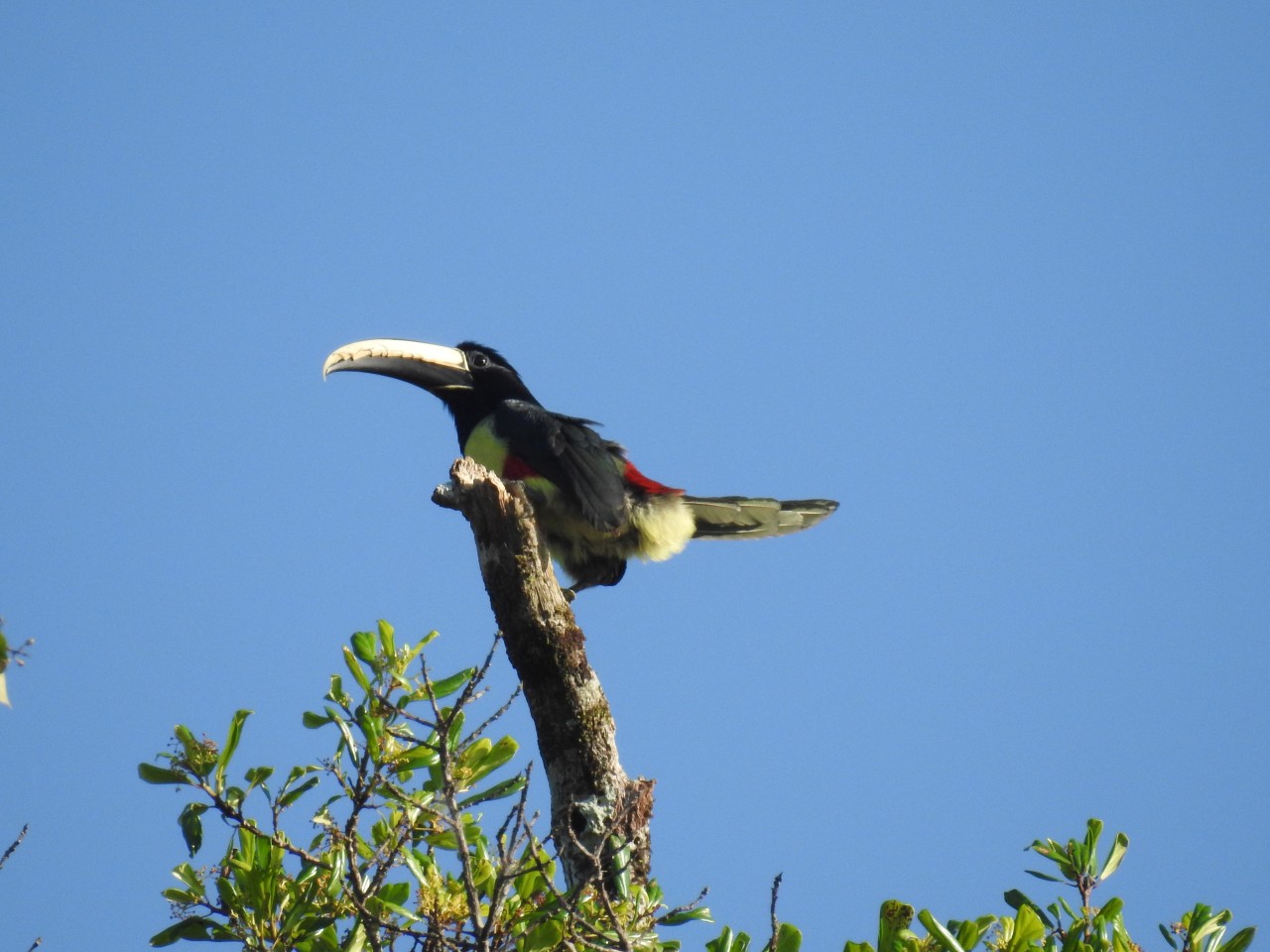 © Dominiek Plouvier | 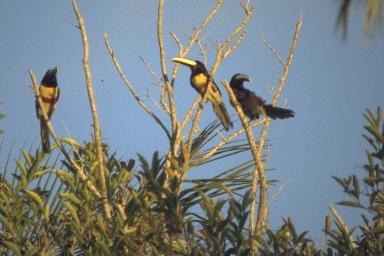 © Dominiek Plouvier | 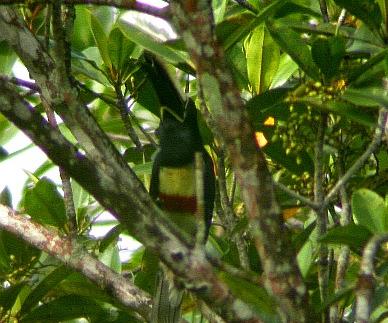 © Erik Toorman |
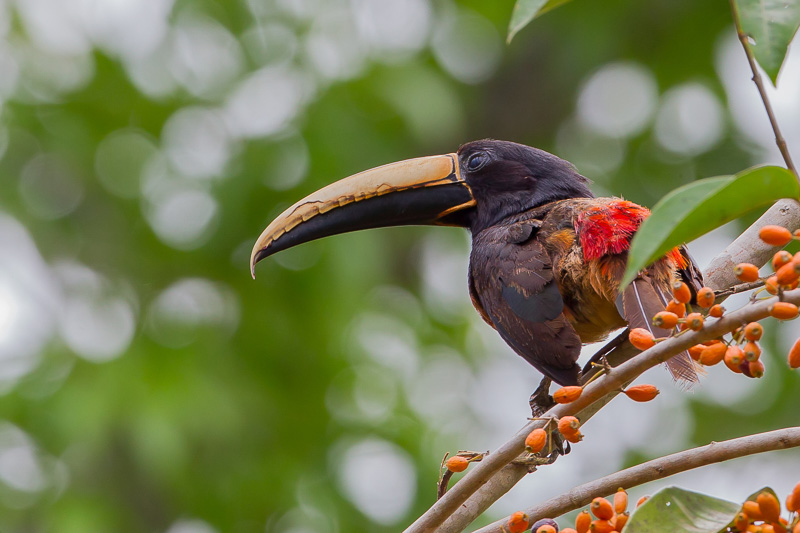 young bird © Paul van Giersbergen | 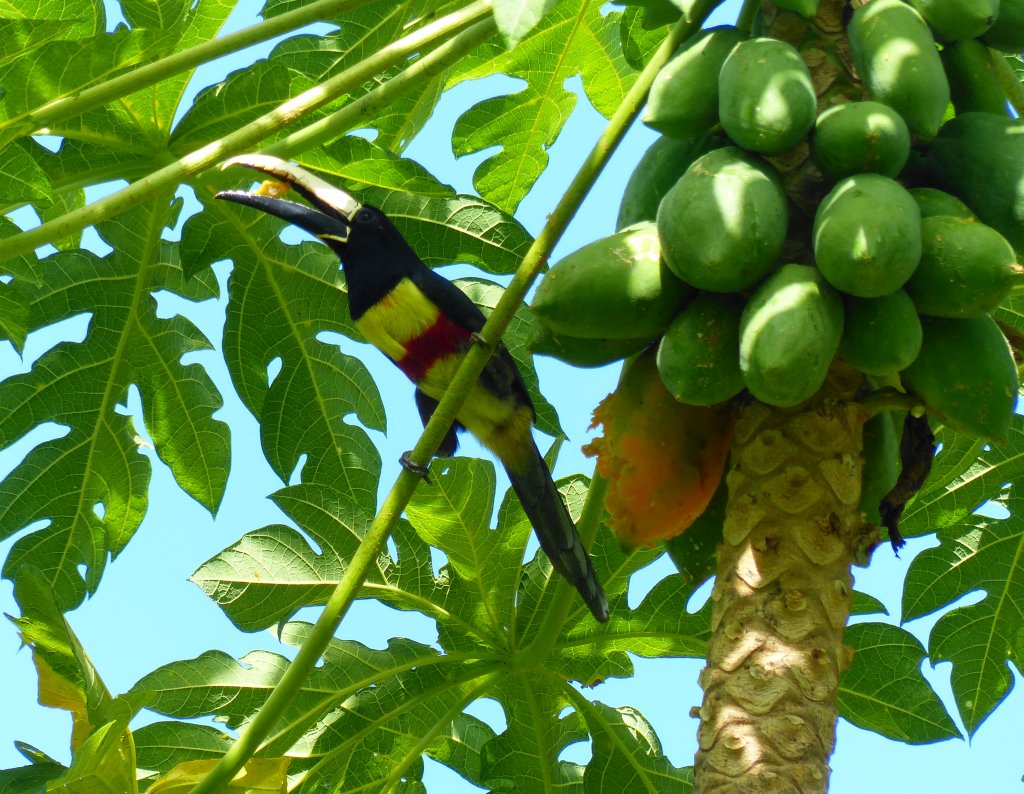 © Ton Plug | 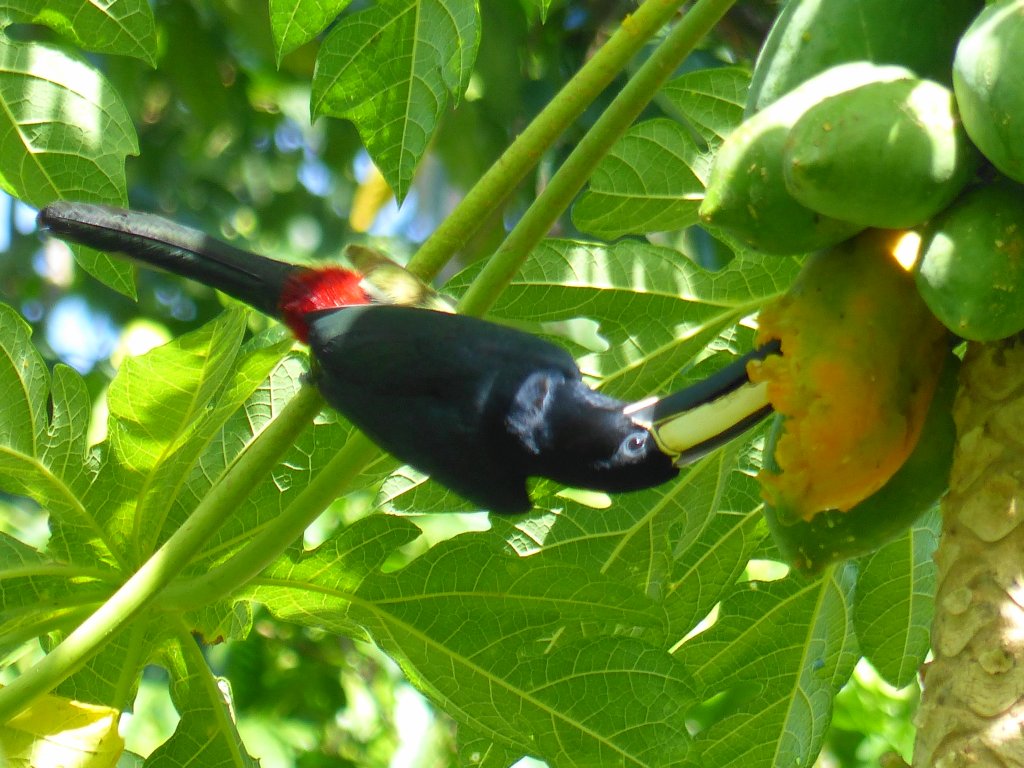 © Ton Plug |
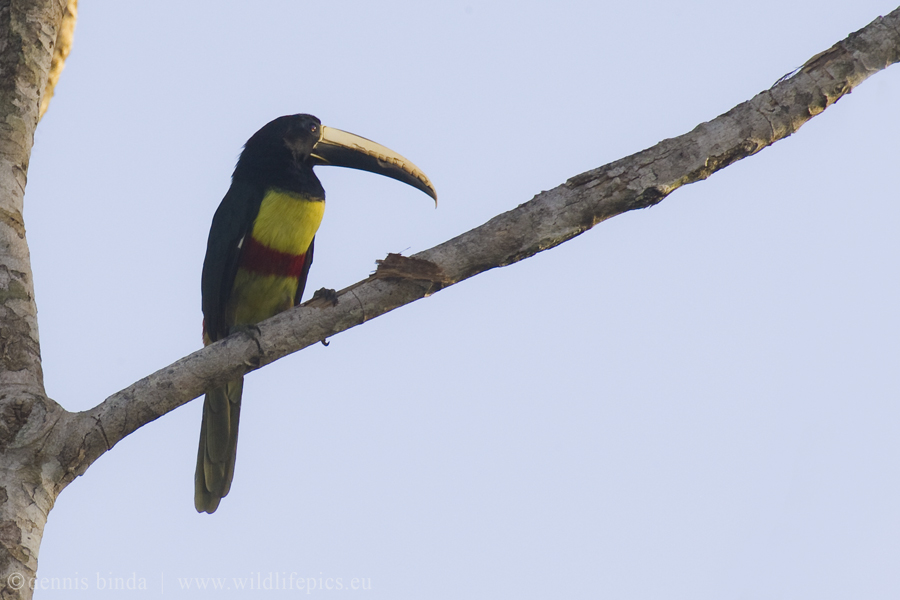 © Dennis Binda |  © Stephan Ferrier |
| Black-necked Aracari: These toucans are mostly seen in groups of up to 5 birds. They are quite common in savanna forest and in the lowland rainforest in Suriname. The first two photos were made by Dominiek Plouvier in Suriname one in 2021 and one in 1986 of three. He writes: 'A Black- necked Aracari on top of a tree, with an epiphytic Coussapoa angustifolia, this is a sometimes 10-15m tree on top of another tree ! .' Erik Toorman's aracari was seen from below in Coronie in 2003. The photo made by Stephan Ferrier is of a bird near its nesthole at Awarradam, February 2005. Dominiek Plouvier made the video where the Aracaris eat the fruits of a Ficus americana and he also made the second video |
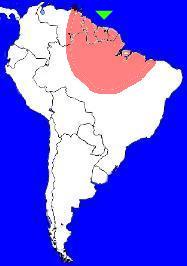 |
| Video (click the link or the 'play'-button to see) | ||
|---|---|---|
| Video recording of a Black-necked Aracari © ; | Video recording of a Black-necked Aracari © ; |
|
|
||||||||||||||||||||||||||||||||||||||||||||
| Observations through the year | Observations of breeding through the year |
|---|---|
| The 502 reported observations of this bird in Suriname, mainly for the last 50 years up to 2018, have been grouped by month. More birds on one day are counted as one observation. Of course, if the graph should depict the total number of birds seen, the differences between the months could be much more pronounced. | The 5 reported breeding observations of this bird in Suriname. Most observations are about nest with eggs, some about fledglings, or feeding at a nest or the building of a nest. Of the about 5000 nests and eggs found for all species together, about 1/3 comes from the egg collection of Penard between 1896 and 1905. For some reason most collecting then was done in the first half of each year, so the shown distribution does not necessarily reflect the actual breeding preferences. The main dry season in Suriname is reckoned to be from half August to the end of November, the main wet season from half April to half August, but the the timing of begin and end does vary from year to year. Around March a second dry season often occurs. |